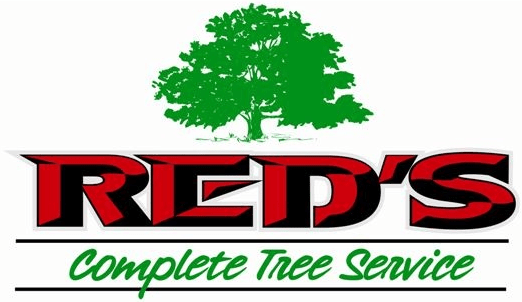How Do You Know When a Tree is Sick?
Your landscaping is an important part of what makes your house a home. To keep your landscaping looking great for years to come, you’ll need to keep an eye on the health of every element of it. This, of course, includes your trees. While trees may take less day to day maintenance than a flower bed or rose bush, you’ll still need to keep an eye out for specific signs that indicate your tree is sick.
Signs of Sickness to Watch for in Trees.
You can tell a lot about the health of a tree just by looking at it. You can start by looking at the roots and taking note of any broken off roots, places where the ground appears to rise up over the root, or fungi such as mushrooms growing around the roots. These are all signs that your tree is sick.
Next, look at the tree trunk just above the ground and check for peeled off bark and deep cracks in the surface. Check the rest of the trunk for swelling, holes, or soft spots that indicate decay. Finally, inspect the limbs and leaves for signs of disease. Spots, holes or discolored leaves are signs for concern, as well as low-hanging branches without bark or leaves, branches that appear to be leaning on others, or branches that have grown together into weak V shapes.
If you pull off a healthy twig and look inside, you’ll notice that it’s bright green. As the twig starts to decay, it will turn to dull green on the inside. If the inside brown or black, the branch is already dead. If you discover that a branch is dead, check the branches around it to determine how far the disease has already spread throughout the tree. You can also scratch the bark off of a section of a tree to expose the wood underneath, determine the health based on the color just as you can with twigs.
These are all signs that the team at Red’s Tree Service will look for when diagnosing a sick tree.
Common Types of Sickness in Trees
Once you notice that something is wrong with one or more of your trees, we can identify whether you’re experiencing one of these common tree problems.
Leaf diseases:
- Anthracnose: If you notice brown spots around the veins of the leaves, of notice that they are falling earlier than expected, this may be the problem. If you’ve had an unusually wet spring or summer, this fungus is even more likely to be an issue. It primarily affects maple, dogwood, ash, oak, and sycamore trees.
- Fire Blight: The name for this disease come from the fact that the dead and blackened leaves and fruits cling to the tree, making it appear burnt. While this is a later indication, the early signs are brown cankers on twigs, black spots on leaves, or leaves that grow in a candy cane shape. This disease commonly affects Cotoneaster, hawthorn, mountain ash, quince, apple, cherry, firethorn, and pear trees.
- Apple Scab: This could be the problem if you notice fruits or leaves with olive green spots or pale leaves that fall to quickly. You’ll start to see yellow spots in May or June, and they’ll get darker as the disease progresses. This disease is harmless but can be annoying and you may be bothered by the appearance of your trees. This disease generally affects mountain ash, crabapple, pear, Cotoneaster, and apple trees.
Diseases in the Tree:
- Cankers: Cankers are growth on the bark of a tree that looks like a blister or canker sore, hence the name. There are three common kinds, Cytospora, Nectria, and Phomopsis, and each one affects different types of trees. However, they all are caused by the same things. Cankers occur when any one of a number of bacteria of fungi infects an open wound in a tree.
- Heart Rot Disease: This disease is common in trees that shed their leaves each year, such as maple, cedar, dogwood, beech, and birch trees. It can be a result of improper pruning, broken branches, or fire or insect damage. Heart Rot disease is caused by fungus and bacteria infecting the bare wood on the tree. If you suspect Heart Rot disease, check for conk or mushroom bodies growing the tree.
- Sooty Mold Disease: This disease is the result of mold feeding of insect honeydew, and is, therefore, most prevalent in trees with a lot of feeding insects. Be on the lookout for a black powdery coating on the tree and leaves. The most common type of mold that affects trees are antennarella, aureobasidium, capnodium, cladosporium, limacinula, and scorias. It most commonly effects elm, linden, boxelder, and maple trees.
- Verticillium Wilt Disease: Verticillium wilt is an especially problematic disease because as a soil-borne disease, it attacks the tree at the root and you may not b able to catch is as quickly as some other diseases. It causes tree leaves to look disheveled and become lighter until they eventually wilt and fall off. The fungus associated with the disease can spread quickly through the soil to the rest of your landscaping, making Verticillium Wilt a highly contagious and concerning tree sickness. It’s most likely to infect elm, maple, catalpa, and stone fruit trees.
Treating Common Diseases in Trees
The team at Red’s Tree Service are experts at treating common tree diseases. We can also prune dead or dying areas of your trees to prevent further damage, or remove trees that are already dead and can’t be helped any further.
Contact us today for a free quote.

